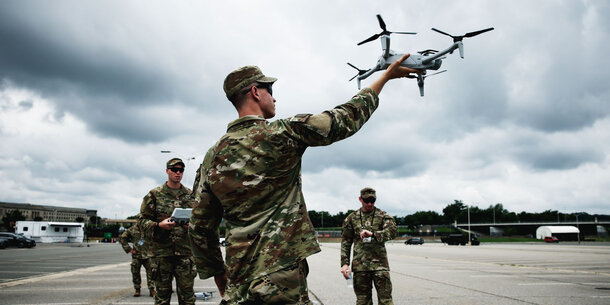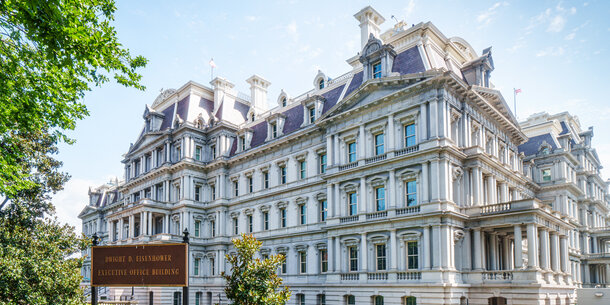The extensive reach of social media has made it an attractive tool for expanding state surveillance. For law enforcement officers and federal agencies, social media monitoring is used both in the course of criminal investigations and as a general dragnet, raising concerns about abuse and overreach.
When agencies use social media to keep tabs on people they perceive as suspicious, it has a disparate impact on historically overpoliced communities, especially communities of color. It also leads to surveillance of and police presence at protests and other First Amendment–protected activities. These risks have a chilling effect on free speech and communications both online and off.
In light of these concerns, the Brennan Center, ACLU of Northern California, Free Press, and Media Justice released a statement Wednesday, joined by 51 other civil society groups, spelling out the civil rights and civil liberties implications of law enforcement monitoring of social media.
There are numerous examples of law enforcement using social media to improperly monitor speech and associations that are protected by the First Amendment. In Memphis, Tennessee, for instance, a police sergeant created a phony Facebook account to impersonate a Black activist, infiltrate online Black protest spaces, and collect intelligence on hundreds of activists. The officer even went so far as to flag nonpolitical gatherings like vegan soul food cookouts. In Minnesota, an FBI Joint Terrorism Task Force used a confidential informant with access to nonpublic social media communications on a Black Lives Matter protest to provide information to local police.
The FBI’s widely condemned “Black Identity Extremist” (BIE) threat designation adds to the concerns. Cooked up by the FBI’s Domestic Terrorism Analysis Unit, the designation lumps together seemingly unrelated cases of violence and posits, without support, that Black Americans’ “perceptions of police brutality” may result in “an increase in premeditated, retaliatory lethal violence against law enforcement.” An internal assessment report leaked in 2017 indicated that the FBI based its determinations that individuals had “been influenced by BIE ideology” at least in part on their social media searches for “pages of BIE and black separatist groups” and “likes” of those pages. The report was immediately met with backlash from lawmakers and advocacy groups, and the FBI promised to stop using the BIE descriptor. But in a 2018 strategy guide, the FBI designated BIE as a “priority domestic terrorism” threat.
In the wake of the police killing of Michael Brown in Ferguson, Missouri, the Department of Homeland Security tracked Black Lives Matter protesters as well. DHS disseminated information about nonviolent protests, walks, and silent vigils to “fusion centers,” which were created to pool counterterrorism intelligence but actually infringe on civil liberties while failing to contribute to national security.
In addition to spying on police accountability activists, DHS has used social media for surveillance of people surrounding the immigration debate. Investigative reporting from NBC’s San Diego affiliate this year revealed that DHS used information gleaned from social media to create “a secret database of activists, journalists, and social media influencers” who were involved in coverage of the so-called “migrant caravan.” In some cases, DHS placed alerts on their passports, leading to increased scrutiny by border officials.
And in June 2018, a private intelligence firm tracked Facebook activity to compile a report about 600 planned protests of the Trump administration’s family-separation policy and circulated it to DHS and fusion centers around the country. The report, which included location data for the protests, was then shared with Immigration and Customs Enforcement. ICE also kept tabs on border groups and other public protests in internal spreadsheets that used the Facebook pages of event sponsors to detail numbers of expected protestors and organizing groups.
There is no shortage of troubling law enforcement examples in local criminal investigations as well. In 2017, Long Island authorities falsely accused a Honduran student of being an MS-13 gang member after he posted Facebook photos of himself with other Central American students dressed in the colors of their home countries’ flags with their area codes displayed.
In 2012, a Black teenager in New York City named Jelani Henry was arrested on a double attempted murder charge based largely on his social media associations and pictures with members of a local “crew.” His older brother, Asheem, who had been arrested five months earlier in a targeted gang raid, was a member of the crew, but Jelani was only connected due to his proximity — both online and in real life — to Asheem and other neighborhood friends. Nevertheless, Jelani spent two years in jail, including nine months in solitary confinement, on the basis of “social media evidence” before his case was dropped and he was released.
Social media monitoring was also used for what was called the “largest gang takedown in New York City history.” Police arrested 120 young men on conspiracy charges, relying in part on over 41,000 Facebook pages and records. But while prosecutors and police framed the case as a targeted prosecution of rival gangs plaguing the community with violence, most of the defendants were never convicted of any violent crime. Strikingly, the majority of the men swept up in the raid were never even alleged to be gang members.
And in Delaware, a Black man with a prior felony conviction was sentenced to 15 years in prison after his girlfriend posted a photo of a gun (registered in her name) to his Facebook account; an undercover police officer had been periodically checking the account for more than two years with no specific basis, raising questions about whether the individual was targeted for his race.
In addition to these issues, our joint statement outlines the dangers of tracking individuals’ locations, the opacity of these tracking efforts, and the lack of restrictions and accountability for social media monitoring.
Social media is virtually everywhere, and we must be wary when the government tries to exploit this ubiquity to target individuals or groups without suspicion or oversight. It’s essential that in any discussion of the issue, lawmakers and the public recognize the harmful impacts from social media surveillance.




